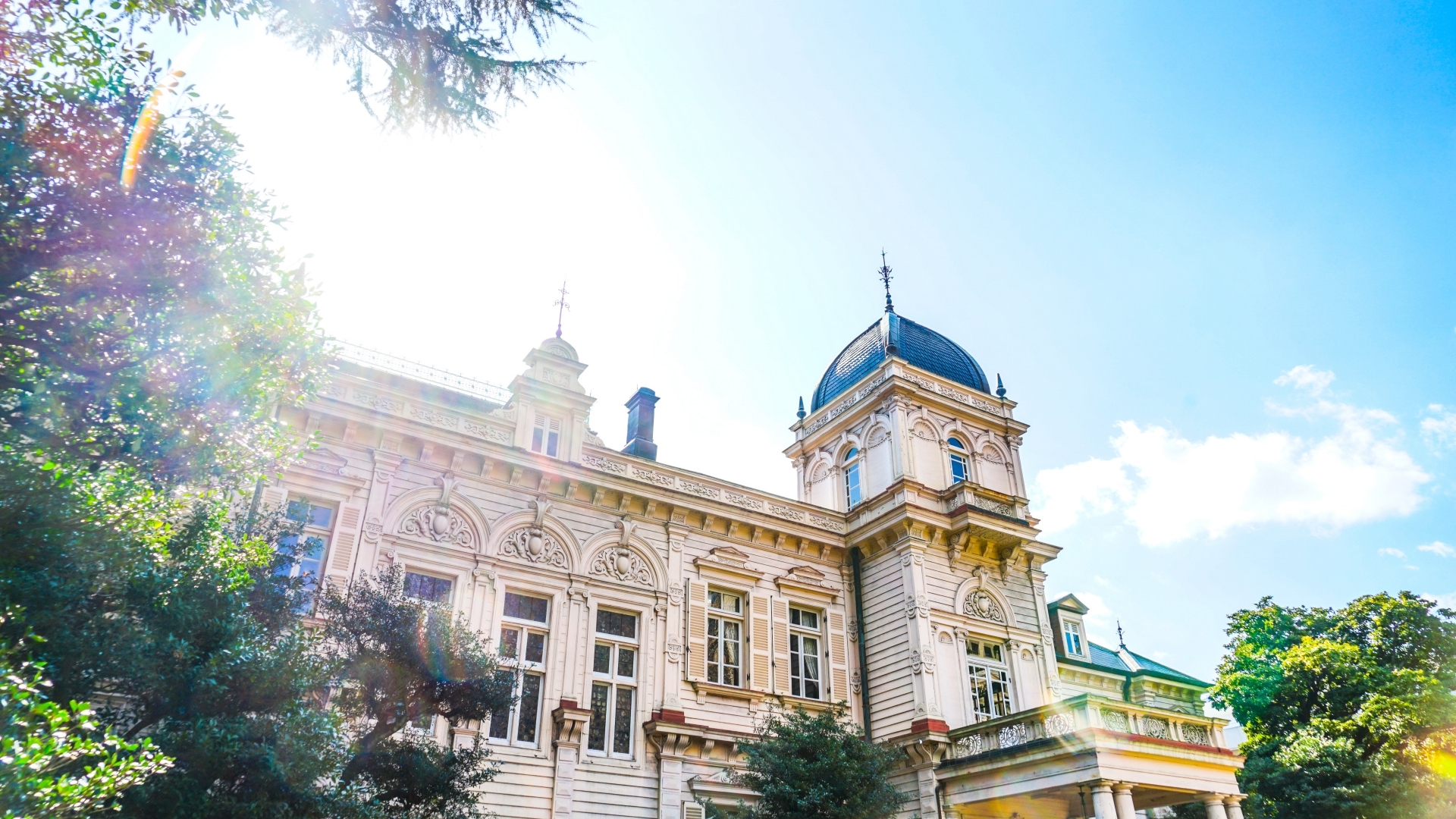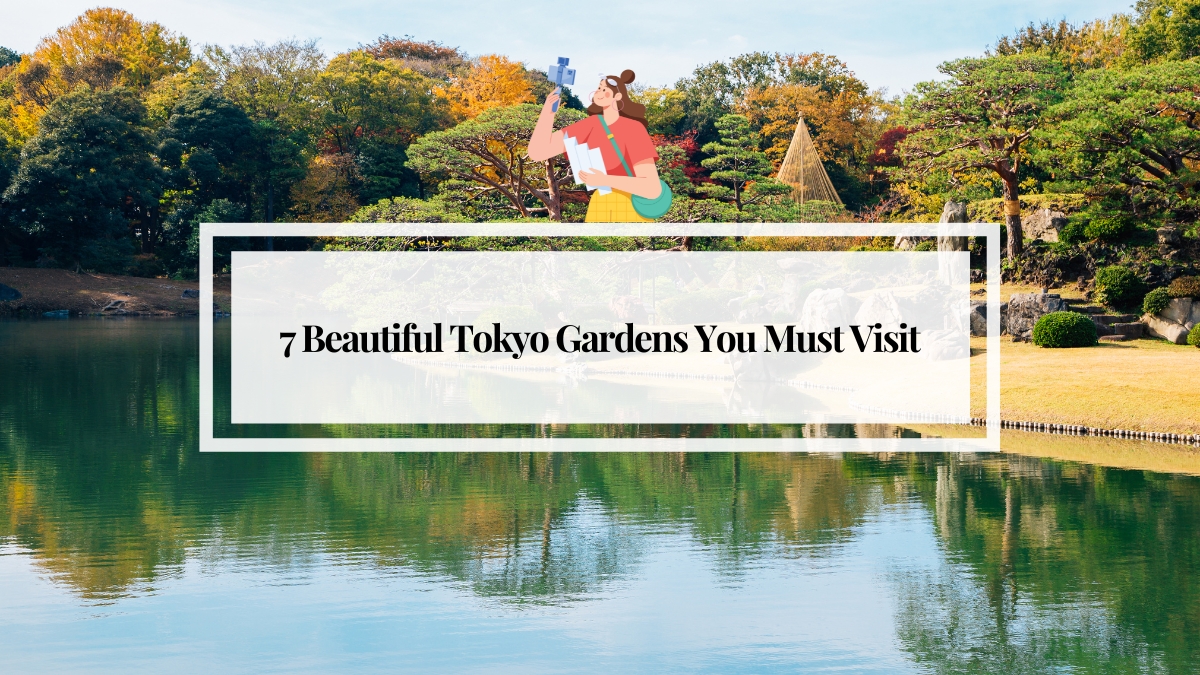Amid the vibrant energy and soaring skyscrapers of Tokyo, you’ll find pockets of serene beauty that have been carefully preserved for centuries—Tokyo’s historic gardens.
These seven gardens are not only stunningly beautiful, with seasonal flowers, tranquil ponds, and meticulously maintained landscapes, but they are also rich in history, each reflecting the artistry of the Edo, Meiji, or Taisho eras.
Whether blending Japanese tradition with Western design or offering strolling paths that reveal new scenery at every turn, these gardens provide a peaceful retreat where travelers can experience authentic Japanese culture.
Best of all, they are remarkably affordable to visit, allowing anyone to step into a world of harmony, history, and natural beauty without leaving the city.
Tokyo’s 7 Must-See Gardens – At a Glance
- Rikugien Garden – A literary-inspired strolling garden with seasonal beauty at every turn.
Nearest Station: Komagome (JR) (7 min walk)
Best Seasons: Spring (weeping cherry blossoms), autumn (illuminated foliage) - Koishikawa Korakuen Garden – Edo-period daimyo garden with Confucian-inspired landscapes and poetic scenery.
Nearest Station: Suidobashi (JR) (8 min walk)
Best Seasons: Spring blossoms, autumn foliage - Shinjuku Gyoen National Garden – A unique mix of Japanese, French, and English gardens right in the city center.
Nearest Station: Shinjuku Gyoen (Tokyo Metro) (5 min walk)
Best Seasons: Spring (cherry blossoms), autumn (red & gold leaves) - Hama-rikyu Gardens – Shogun’s retreat by Tokyo Bay, with a tidal pond and teahouse views.
Nearest Station: Shimbashi (12 min walk)
Best Seasons: Year-round; plum blossoms (Feb), cherry blossoms (spring), autumn colors - Kyu-Furukawa Gardens – Roses, a Western mansion, and a serene Japanese pond garden.
Nearest Station: Kami-Nakazato (7 min walk)
Best Seasons: May & October (roses), autumn foliage - Kiyosumi Gardens – A stone collector’s paradise with stepping stones across a tranquil pond.
Nearest Station: Kiyosumi-Shirakawa (3 min walk)
Best Seasons: Spring blossoms, fresh summer greenery, autumn leaves - Kyu-Iwasaki-tei Gardens – Meiji-era estate blending Western mansions and Japanese-style halls.
Nearest Station: Yushima (3 min walk)
Best Seasons: Spring (azaleas & greenery), autumn foliage
Rikugien Garden 六義園

Rikugien Garden is one of Tokyo’s most elegant and historically rich Japanese gardens, designed in the late 17th century as a classic example of a strolling-style landscape garden.
Built over seven years by Yanagisawa Yoshiyasu, a trusted retainer of Shogun Tokugawa Tsunayoshi, the garden features a large central pond, man-made hills, and winding pathways that reveal new views at every turn.
Its name, “Rikugien,” comes from an ancient classification of poetry, reflecting Yoshiyasu’s deep love of literature and art.
Today, Rikugien is especially famous for its spectacular weeping cherry blossoms in spring and breathtaking autumn foliage, both of which are illuminated at night for an almost magical atmosphere.
But no matter the season, the garden’s quiet elegance makes it a peaceful retreat from the busy city. Just a 7-minute walk from JR Komagome Station, Rikugien offers visitors the chance to step back into Edo-period refinement while still being right in the heart of modern Tokyo.
Koishikawa Korakuen Garden 小石川後楽園

Koishikawa Korakuen Garden is one of the oldest and most historic daimyo gardens in Tokyo, dating back to the early 1600s. A daimyo garden was a grand landscape garden built by feudal lords (daimyo) during the Edo period, designed both as a place of relaxation and as a symbol of power and culture.
Koishikawa Korakuen was originally created by Tokugawa Yorifusa, the founder of the Mito branch of the Tokugawa family, and later expanded by his successor Tokugawa Mitsukuni, who infused the design with Confucian philosophy and Chinese aesthetics.
Unlike the bright and open feel of Rikugien, this garden has a more scholarly and reflective atmosphere, with landscapes inspired by famous scenic spots in Japan and China.
The strolling-style layout features a large central pond, small hills, streams, and rice fields, offering different views as you walk along the paths. Highlights include the “Daisensui” pond and poetic spots that connect visitors to centuries of art and history.
Adding to its charm is the striking contrast between the serene Edo-period garden and the modern Tokyo Dome right next door. Designated both a Special Historic Site and a Special Place of Scenic Beauty, Koishikawa Korakuen is not only a cultural treasure but also a peaceful retreat just 8 minutes on foot from Korakuen Station.
Shinjuku Gyoen National Garden 新宿御苑

Shinjuku Gyoen National Garden is one of Tokyo’s most beautiful green escapes, right in the middle of the city.
The garden blends three distinct styles—traditional Japanese, formal French, and spacious English landscape—creating a unique and relaxing atmosphere. In spring, it’s one of the best spots in Tokyo to enjoy cherry blossoms, while in autumn the vibrant red and gold leaves transform the park into a picture-perfect scene. Originally the estate of the Naito family in the Edo period, it later became an imperial garden in 1906 before opening to the public after World War II.
Today, Shinjuku Gyoen is a beloved national garden managed by the Ministry of the Environment, offering locals and travelers alike a chance to enjoy nature, history, and tranquility just steps away from the bustling streets of Shinjuku.
Hama-rikyu Gardens 浜離宮恩賜庭園

Hama-rikyu Gardens is a historic oasis right by Tokyo Bay, offering a rare glimpse into the elegance of Edo-period landscaping.
Its most famous feature is the tidal pond, which is connected directly to the bay and changes with the ebb and flow of the tide—something you won’t find anywhere else in Tokyo. Once a feudal lord’s garden and later used by the Tokugawa shogun family, it also has old duck hunting grounds that give you a sense of its past.
What makes Hama-rikyu extra special today is the contrast between its serene greenery and the dramatic skyline of modern skyscrapers surrounding it—a perfect blend of old and new Tokyo.
Visitors can even take a break at a teahouse on the water, sipping matcha while soaking in the unique view. Located about a 12-minute walk from JR Shimbashi Station, it’s an easy stop for anyone wanting to experience both history and harmony in the heart of the city.
Kyu-Furukawa Gardens 旧古河庭園

Kyu-Furukawa Gardens is a rare gem in Tokyo where Western and Japanese garden styles come together in perfect harmony.
Built in the Taisho era, the grounds feature a stately Western-style mansion on the hill, a rose-filled European garden on the slope, and a beautifully crafted Japanese garden below—each seamlessly blending into the other thanks to the natural terrain.
The Western-style mansion and garden were designed by the British architect Josiah Conder, who also created iconic landmarks like the Rokumeikan and Nikolai Cathedral, while the Japanese garden was the work of the renowned Kyoto gardener Ogawa Jihei VII (known as “Ueji”).
Strolling through the grounds, you can admire colorful roses set against the elegant brick mansion before descending into the serene Japanese garden with its pond, stone lanterns, and seasonal beauty.
Once the residence of statesman Mutsu Munemitsu and later owned by the Furukawa family, the garden was opened to the public after World War II. Today, it stands as one of the best-preserved examples of early 20th-century garden design, and it has been officially designated as a Place of Scenic Beauty in Japan.
Kiyosumi Gardens 清澄庭園

Kiyosumi Gardens is a beautiful example of a kaiyū-style rinsen garden—a traditional strolling garden with a large pond, artificial hills, and carefully arranged stones.
What makes this garden special is the impressive collection of famous stones brought from all over Japan, many of which are placed along the water’s edge. Visitors can experience the unique “stepping stones” that let you walk as if across the pond itself, giving the feeling of being part of the landscape.
The site has a long history, once linked to Edo-period merchants and feudal lords, but it was later purchased and developed in the Meiji era by Iwasaki Yatarō, the founder of Mitsubishi, as a retreat for guests and employees.
Completed in the late 19th century, it became a representative example of modern Japanese garden design. Despite suffering damage in the Great Kanto Earthquake, the garden served as a lifesaving refuge for many people and was later donated to the city.
Today, Kiyosumi Gardens offers a calm, elegant atmosphere where visitors can enjoy seasonal beauty—cherry blossoms in spring, lush greenery in summer, and colorful leaves in autumn. With its combination of history, artistry, and tranquility, it’s a perfect spot for travelers looking to experience authentic Japanese garden culture in the heart of Tokyo.
Kyu-Iwasaki-tei Gardens 旧岩崎邸庭園

Kyu-Iwasaki-tei Gardens is a fascinating blend of Western and Japanese architecture, offering a glimpse into the lifestyle of Japan’s elite during the Meiji era.
Built in 1896 as the residence of Hisaya Iwasaki, the third president of Mitsubishi and son of the company’s founder, the estate once spanned an enormous 15,000 tsubo (about 50,000 m²) with 20 different buildings. Today, only three remain: the Western-style mansion, a billiards room, and a large Japanese-style hall.
The Western mansion, designed by the famous British architect Josiah Conder (who also designed the Rokumeikan), is a two-story wooden building in the Jacobean style, featuring intricate interior decorations rarely seen in other Western-style houses of the time.
Nearby stands the billiards room, also designed by Conder, built in a charming Swiss chalet style and once connected to the mansion by an underground passage. The Japanese hall, attached to the Western mansion, is built in the traditional shoin-zukuri style, complete with painted sliding doors attributed to the renowned artist Hashimoto Gahō.
The surrounding garden, which combines elements of traditional daimyo gardens with modern Western lawn spaces, reflects the cultural fusion of its era. After World War II, the property was briefly seized by GHQ, then repurposed as a judicial training institute before opening to the public.
Today, the site is preserved as an Important Cultural Property of Japan, making it a must-visit for travelers interested in architecture, history, and the meeting of East and West in modern Japan.
Closing Thoughts
These seven gardens show a quieter, timeless side of Tokyo—beautiful, historic, and wonderfully maintained, yet easy and affordable to visit. Be sure to add at least one to your itinerary, and you’ll experience a refreshing balance to the city’s fast-paced energy.



